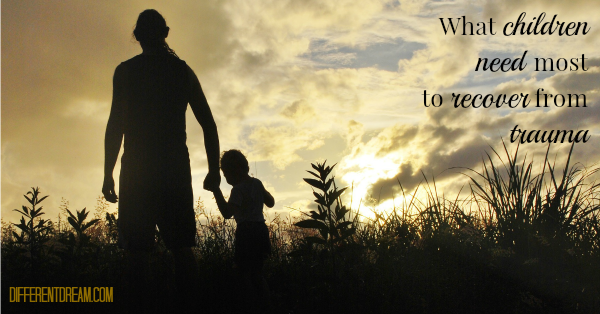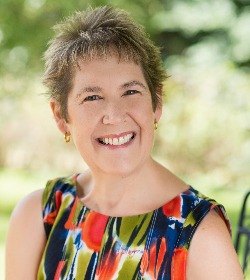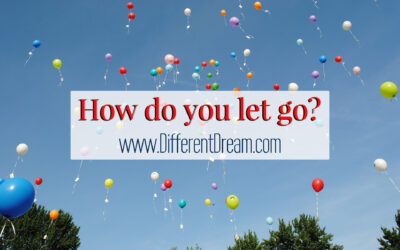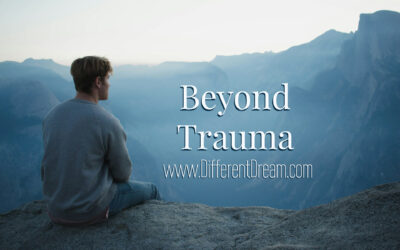Attachment Categories in Adults and Inside Out Parenting

Today’s post about attachment categories in adults is part of Different Dream’s ongoing Inside Out Parenting series. The earliest posts in the series offered information about how the brain works including basic functions of the parts of the brain, high road and low road parenting, the difference between implicit and explicit memory, and the brain’s 7 instinctual responses to perceived danger. The series then moved on to an examination how those brain responses affect behavior with a discussion of attachment categories in children.
Attachment Categories in Adults
Today’s post continues the discussion with a look at how these childhood attachment categories can affect our attachment categories in adults, which in turn affects how we parent. The previous post in this series summarized four basic attachment categories in children. (As you may recall “attachment” is the word psychologists use for “love.”) The categories are secure, avoidant, ambivalent, and disorganized.
Dr. Daniel Siegel and Mary Hartzell described each category in their book Parenting from the Inside Out: How a Deeper Self-Understanding Can Help You Raise Children Who Thrive. They also explain how those categories shake down into the following adult attachment categories:
- Securely-attached children become securely attached adults. Children raised by a caregiver who provided a secure and loving environment become adults who value relationships. They can be both flexible and objective when talking about their childhood and upbringing. They are able to make sense of even the hard bits that happened as they grew up.
- Avoidantly-attached children become dismissive adults. If kids grow up with a caregiver who is emotionally unavailable or rejecting, they may become parents who aren’t sensitive to the needs of their children, of others, or of their own needs. They tend to be isolated and minimize dependence on others. They often don’t understand the importance of relationships, memories, emotions in connecting the past to the present and the future.
- Ambivalently-attached children become preoccupied adults. When a caregiver’s attention to a child is inconsistent–sometimes perceptive and responsive, but sometimes not–the child may become a preoccupied adult. A preoccupied parent is anxious and uncertain. This preoccupation, often with the past, impairs a caregiver’s ability to recognize or meet the needs of the child.
- Disorganizedly-attached children become disorganized adults burdened with unresolved trauma. They exhibit abrupt alarming shifts in their behavior. Their behavior is disorienting to the children in their care. Their unresolved trauma disrupts the flow of information to the brain and impairs their ability to remain emotionally balanced or connect with others.
Why Understanding Adult Attachment Categories Is Crucial
One of the most profound findings during the research and writing of Does My Child Have PTSD? What To Do When Your Child Is Hurting from the Inside Out was this: parents and primary caregivers play crucial roles in helping children recover from traumatic events. When traumatized children have secure caregivers who respond calmly after the event, who recognize and meet their children’s needs by providing a secure, stable, and loving environment, the children are likely to process and recover from the trauma. Children whose parents or caregivers dismiss the trauma, are too preoccupied or anxious to meet their children’s needs, or whose behavior is so disorganized as to be the source of the trauma or to cause further trauma are much less likely to process and recover from a traumatic event.
Why Adult Attachment Categories Are Not a Death Sentence
If the above paragraph was the last word in adult attachment categories, it would sound like a death sentence. Thankfully, it is not either the last word or a death sentence. Because by working through and resolving past attachment issues, adults can become securely-attached adults who raise securely-attached children. The next post in this series will delve into the details of how to make that happen.
Your Thoughts about Attachment Categories in Adults?
Did this article result in insights or questions about any of the attachment categories in adults? Feel free to share them in the comment box.
Inside Out Special Needs Parenting, Part 1
Inside Out Special Needs Parenting, Part 2
Inside Out Special Needs Parenting, Part 3
Inside Out Special Needs Parenting, Part 4
Inside Out Special Needs Parenting, Part 5
Inside Out Special Needs Parenting, Part 6
Do you like what you see at DifferentDream.com? You can receive more great content by subscribing to the quarterly Different Dream newsletter and signing up for the daily RSS feed delivered to your email inbox. You can sign up for the first in the pop up box and the second at the bottom of this page.
By Jolene
Jolene Philo is the author of the Different Dream series for parents of kids with special needs. She speaks at parenting and special needs conferences around the country. She’s also the creator and host of the Different Dream website. Sharing Love Abundantly With Special Needs Families: The 5 Love Languages® for Parents Raising Children with Disabilities, which she co-authored with Dr. Gary Chapman, was released in August of 2019 and is available at local bookstores, their bookstore website, and at Amazon.
Subscribe for Updates from Jolene
Related Posts
How Do I Let Go of My Adult EA/TEF Child?
Valeria Conshafter explores the question “How do I let go of my adult EA/TEF child?” for EA/TEF Awareness Month.
The Physical Manifestations of Grief in Caregivers
Jolene explains how the heaviness of loss and sorrow can contribute to the physical manifestations of grief in caregivers.
Experiencing Post-Traumatic Growth while Raising a Child with Disabilities
Jolene explains the benefits of experiencing post-traumatic growth while raising a child with disabilities.






0 Comments